Glossary of tattoo terminology
The jargon every tattoo artist should know
04 January 2024
If you've recently entered the tattoo world, you might have felt lost in a sea of unusual terms, either because you've never heard them before or because they are too specific to the profession.
Don’t worry! In this craft, there's very precise and technical jargon that can sometimes be confusing.
That's why we've put together a glossary of terms to help clear up any ambiguity and guide you better every time you hear things like Taper, Autoclave, Magnum, or such...
By the end of this article, you'll be able to chat confidently with fellow professionals without feeling like they're speaking almost in code.
Get ready to take notes!
Practical dictionary for tattoo professionals
Bugpin
This term refers to the smallest needles used for tattooing.
They have a diameter of 0.30 mm and a greater grouping than standard line needles (0.30 mm - 0.35 mm). The spacing between their needles is closer.
These characteristics make them ideal for ultra-fine lines and intricate details that require precision.
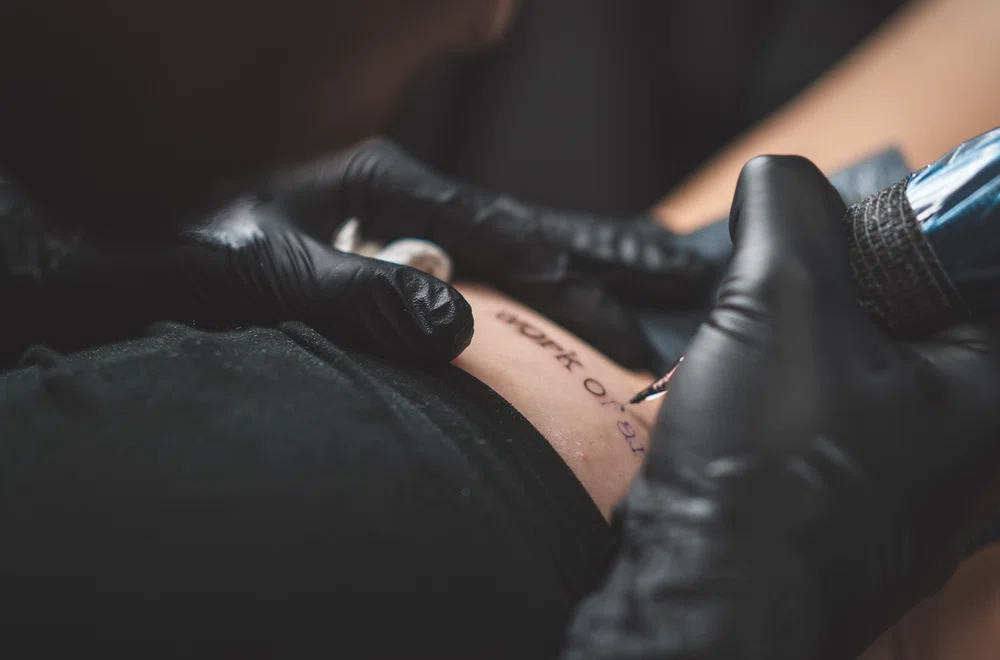
Taper
It refers to the conicity of the needle tip; that is, its specific build, ranging from the thinnest to the thickest part of the needle.
There are Short Taper (ST), Medium Taper (MT), Long Taper (LT), and Extra-Long Taper (ELT). Each has different uses and effects.
Overall, taper in tattoo needles is a crucial aspect when choosing the needle type, as it influences its flexibility and determines how deeply it should be inserted into the skin. That's why, your choice will depend on several factors.
Configuration or Grouping
It's what determines the pattern with which ink enters the skin, which is marked by the distance between the needles and their arrangement.
Although it may be hard to notice at first glance, needles are usually made up of several needles (with some exceptions). So, the more needles grouped, the more ink is applied in one stroke. Thus, a tight circular grouping will yield a different result than a grouping with only three needles in a straight line.
The most commonly used are Round Liner (RL) and Round Shader (RS). You can also see Flats (F), Round Magnum (RM), a.k.a. "Curved Mag"; Weaved Magnum (M1), and Stacked Magnum (M2), among others.
Magnum
This needle configuration is one of the most well-known and widely used.
Its grouping is horizontal but can be arranged in different ways: in a single row (flat mag); in two, either zigzag or one above the other; or with shorter ends (cat tongue).
It looks like a flat brush. Therefore, depending on the direction used, it can be suitable either for shading or filling, as well as for lines.
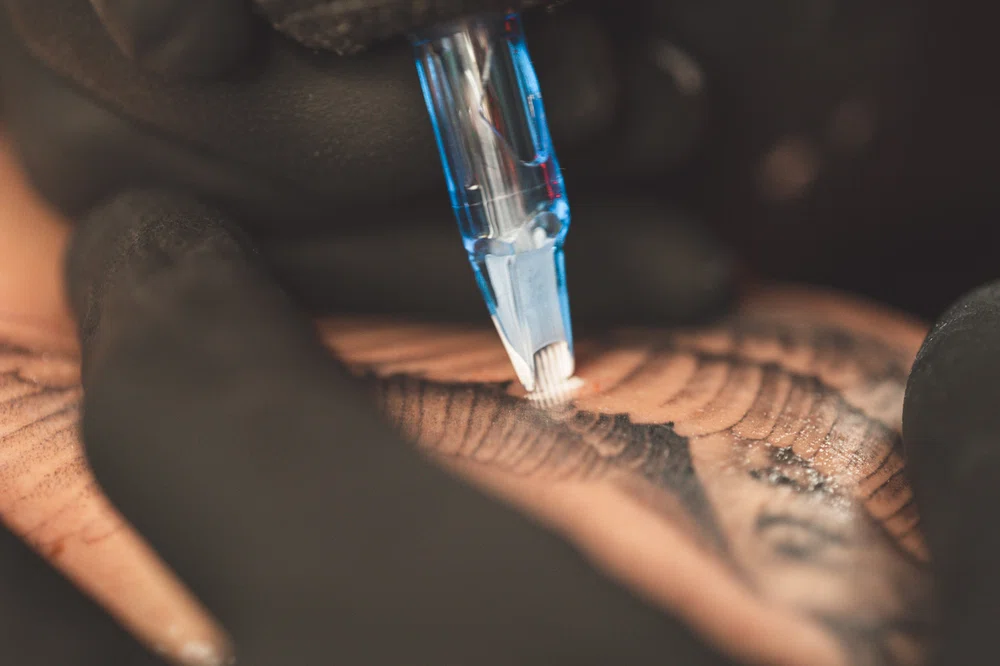
Cartridge Needles
These disposable needles have revolutionized the tattooing process, providing a more hygienic, convenient, and safe method for clients.
They usually have a protective membrane that creates a sealed space to prevent fluids from entering the machine.
Needles are a world unto themselves. If you're interested in learning more about their characteristics and use, check out our most comprehensive Tattoo needle guide.
Coil Machine
These are the predecessors in the history of tattoo machines. Here, the movement of the needles is generated by a system of electromagnetic coils.
They are robust and powerful, providing a more traditional feel. Perfect for both crisp lines and color packing, that's why many prefer them for classic work and thicker lines.
Rotary Machine
These are a more modern option. Here, the movement of the needles is driven by an electric motor.
They are quieter and lighter, making them ideal for more precise and detailed work. Their versatility makes them a top pick among those who practice different styles and techniques.
Liner
It's how machines specifically designed for creating lines and outlines are known.
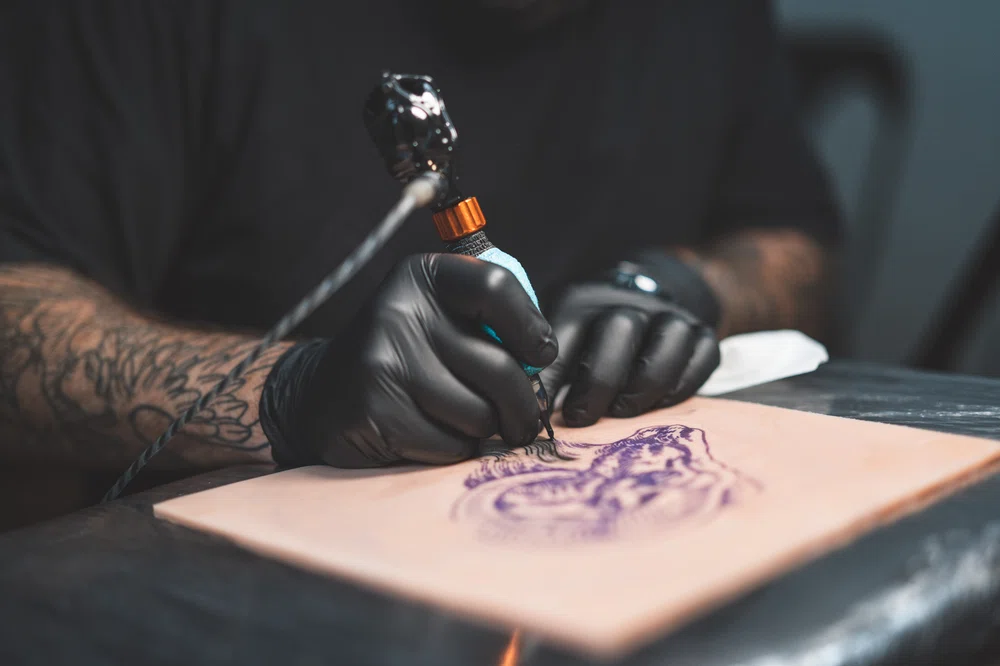
Shader
It's what we call the type of tattoo machine commonly used for shading.
The choice of machine always depends on the tattoo artist's style and personal preferences.
To learn more about the different features and options you have, take a look at our article on Types of tattoo machines.
Voltage
In scientific terms, it's the force that drives electric current through a circuit, which is measured in volts (V).
Practically speaking, the voltage in tattooing is the amount of electrical energy flowing through the tattoo machine. It determines the electrical power applied when tattooing. Meaning, it controls the speed and force with which the needle moves.
There are different settings. Knowing them is crucial to adjusting the depth and speed of tattooing, as it directly influences the quality and precision of the tattoo.
Proper voltage management is crucial for achieving crisp lines, vibrant colors, and smooth shading in tattoos. Therefore, every tattoo artist must know how to regulate it according to each circumstance.
Learning it not only requires being informed but also a lot of practice and further fine-tuning.
Power Supply
It's the device that supplies electrical power to the tattoo machine and is directly linked to voltage since it's through this device that voltage is adjusted.
Choosing the right tattoo power supply is essential, as it allows us to work with precision and comfort, resulting in better results.
In a nutshell, voltage is an electrical property, while the power supply is the device generating that voltage.
Metaphorically, and to grasp the concept better: voltage is like the water pressure flowing through a hose, and the power supply is like the pump controlling and adjusting that pressure to be right for your tattoo machine.
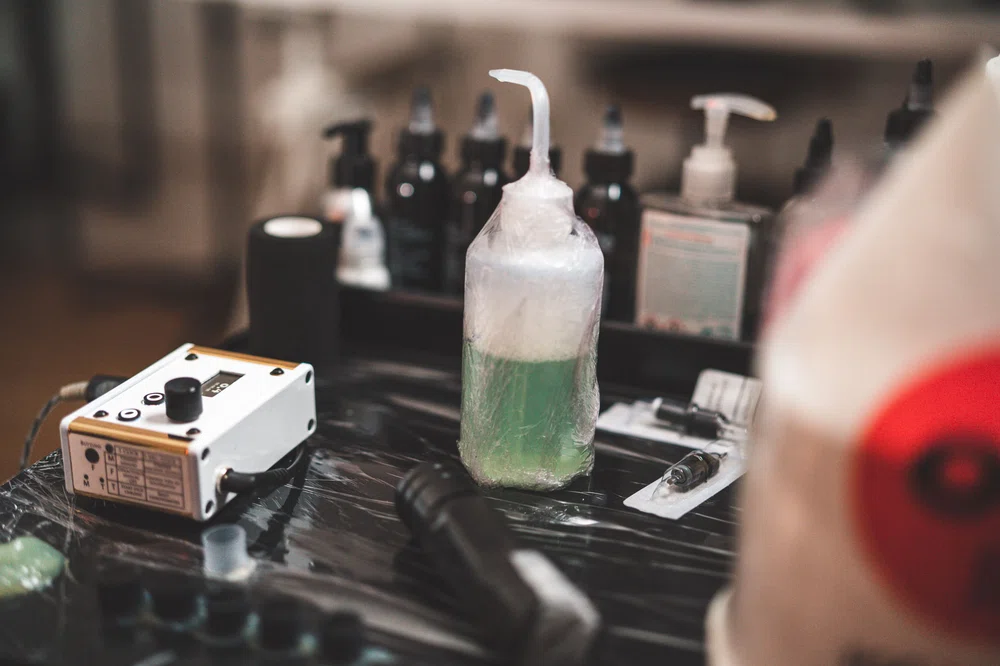
Autoclave
It's a machine specially designed to sterilize tattoo equipment and tools.
It's considered the best option to ensure that the materials used during the tattoo process are as safe as possible.
Grip
It’s the name given to the handle by which the machine is grabbed when tattooing.
It consists of three hollow elements: a body that can vary in thickness, which holds a cylinder attached to the machine; and a nozzle on the other side.
Stroke or Throw
In tattooing, stroke (a.k.a. throw) is the popular term for the needle's travel from its highest to lowest position, which can be short or long.
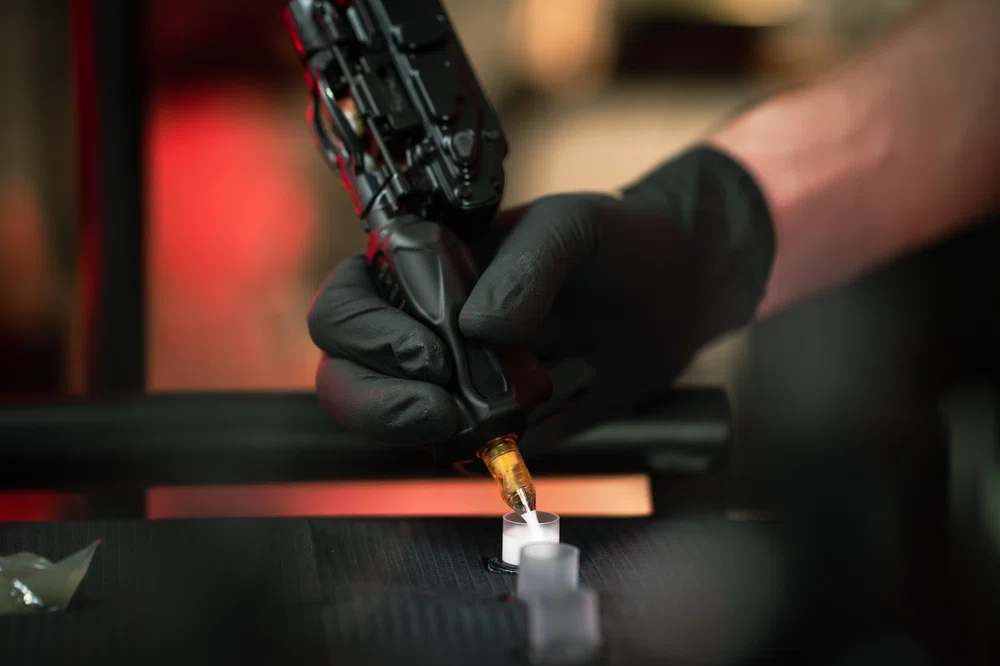
Blowout
This is the term commonly used to describe when a tattoo line looks slightly blurred, leaving a halo effect.
Generally, it happens when the needle has gone too deep into the skin. It is a direct response from the immune system to a foreign body trying to settle (the ink). Although there may be other reasons.
If you're interested in a more in-depth understanding of the causes and solutions to this issue, check out our article: What is a Blowout in Tattoos?
Stencil
This term is widely used for the templates that transfer a tattoo to the skin.
Currently, there are numerous methods for both creating and applying stencils during a session.
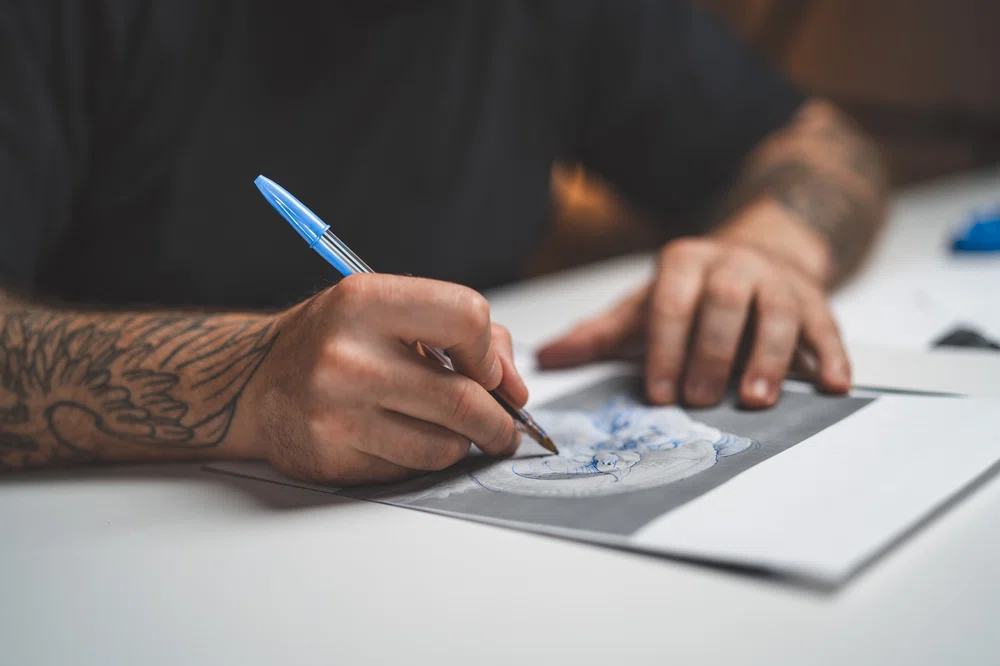
Pepper & Whip shading
These are the common terms used for shading techniques employed through dynamic dotwork.
Meaning, they are applied through certain movements to create specific effects, whether pendulum-like, circular motion, or fast back and forth, among others.
There are several dotwork techniques used in the art of tattooing; pass by the following article to delve into them, Tattoo Techniques: Dotwork.
Saniderm, Dermalize, Second skin (and such)
These are prevalent brands of healing self-adhesives, also known as dermal patches.
While they're not the only ones on the market, most people refer to them by these names, making it useful to know them.
Flash Tattoos
It’s the popular term used for the particular designs presented at events like Walk-ins or Flash Days.
They are usually simple, small, and generic. It serves both to promote a tattoo artist's style or to offer more accessible designs.
In short, flash tattoos are ideal to be completed in a quick session and attract a different type of client who is not willing to get a larger piece.
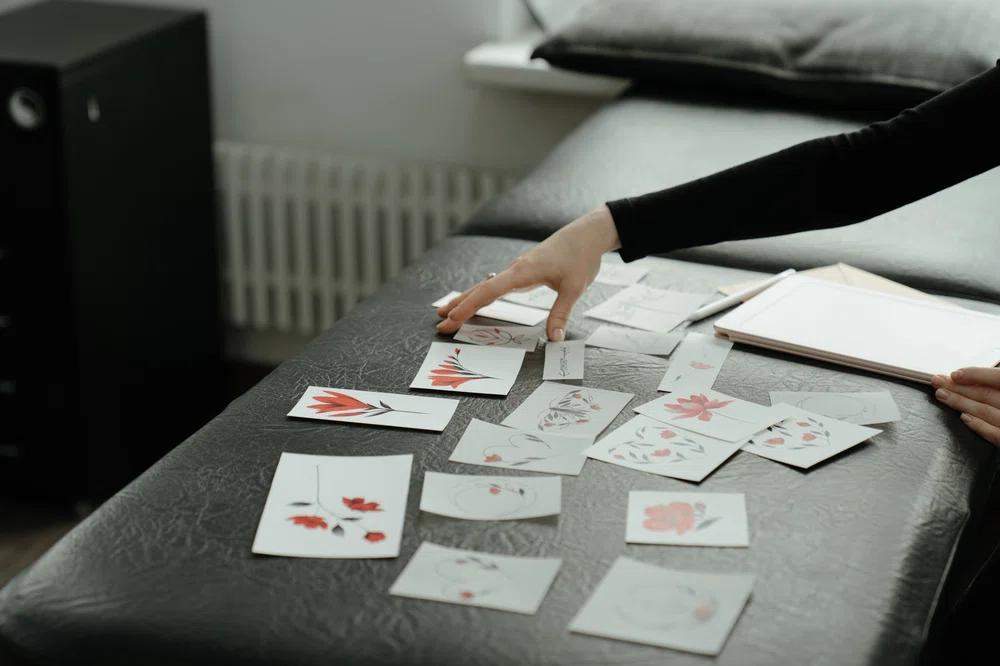
Freehand
The Freehand tattoo technique is used to make designs manually directly on the skin.
Executing it requires precision, confidence, and experience. Therefore, it's necessary to have well-honed drawing skills and different tattoo application techniques.
Blast-Over
This innovative style has become a great solution to give a second life to a tattoo but with a different touch.
It involves merging an existing tattoo with a new one, creatively integrating them rather than completely covering the old tattoo.
The challenge in Blast-over tattoos is to make both pieces flow harmoniously without seeming forced.
Blackout
The Blackout style is believed to have started as a solution to completely cover tattoos but has quickly become a trend.
It consists of packing the skin with large areas of black ink, either on virgin or already tattooed skin.
The challenge of Blackout tattoos is to achieve solid fillings without damaging the skin excessively.
Cover-up
Completely covering an old piece with a new one is so complex that it's almost a style in itself. In fact, there are tattoo artists who specialize exclusively in Cover-ups.
Either way, it's highly sought after because it's a great alternative to get rid of a tattoo without resorting to laser removal.
The challenge of a Cover-up is to create an attractive piece without revealing what's underneath (unlike a Blast-over).
Cup or Cap
It's what we usually call the small containers used to hold ink during the tattoo process.
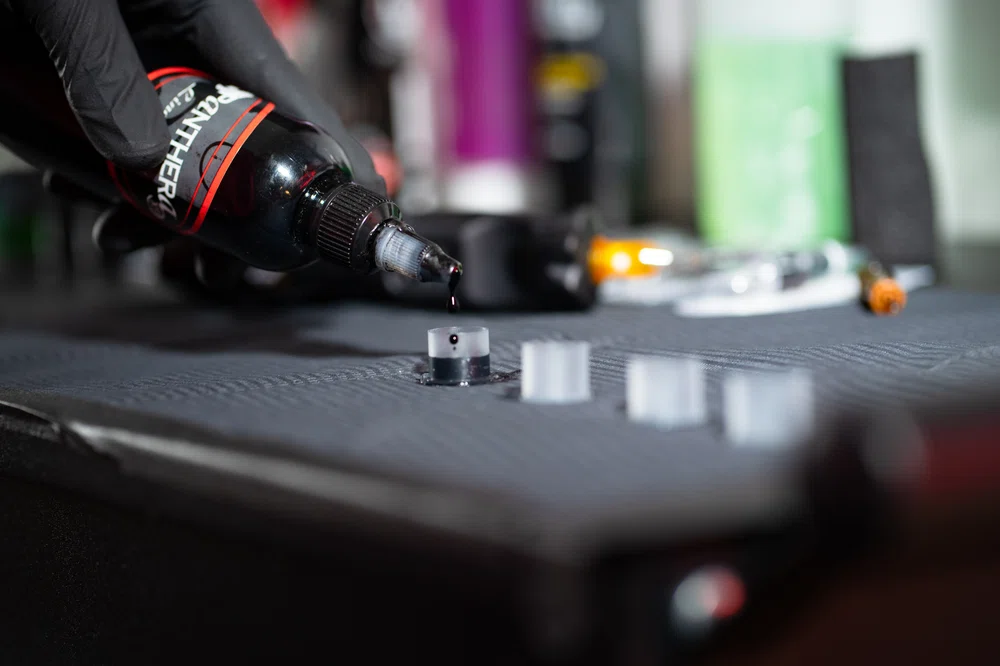
In tattooing, learning never ends
This has been just a brief overview of some of the most commonly used or consulted jargon by tattoo enthusiasts. Just bear in mind that they can vary from one region to another, but in general, many keep their original English form due to the tradition and familiarity within the tattooing community. Which luckily makes it easier for us native English speakers!
Perhaps you've already recognized some of these words. Still, if you've ever felt lost among so many new terms and unfamiliar concepts, you now have the solution! Keep it handy to study thoroughly or consult it whenever you need it.
And as a final piece of advice, we encourage you to stay informed and up to date because this industry evolves so fast, that it never stops adding innovations.
That's why we always say that in this profession, you never stop learning; continuous education is essential not only to keep up with the latest trends but also to refresh your technique and style.
So, now you know... keep expanding your knowledge!
Fancy a collection of tricks and tips? In our intensive professional tattoo courses, besides learning in detail about the utility and application of each tool by the hands of experienced tattoo artists, you also learn in-depth everything that involves engaging in the craft of tattooing, from Theory, through Methodology, to covering Technique and good practices.
We've gathered it ALL in one of the most comprehensive online tattoo education offers available to date! Ready to level up? 🚀